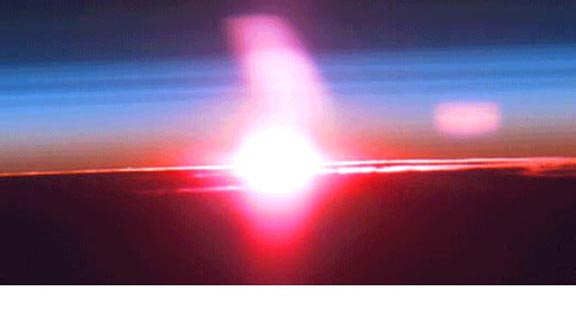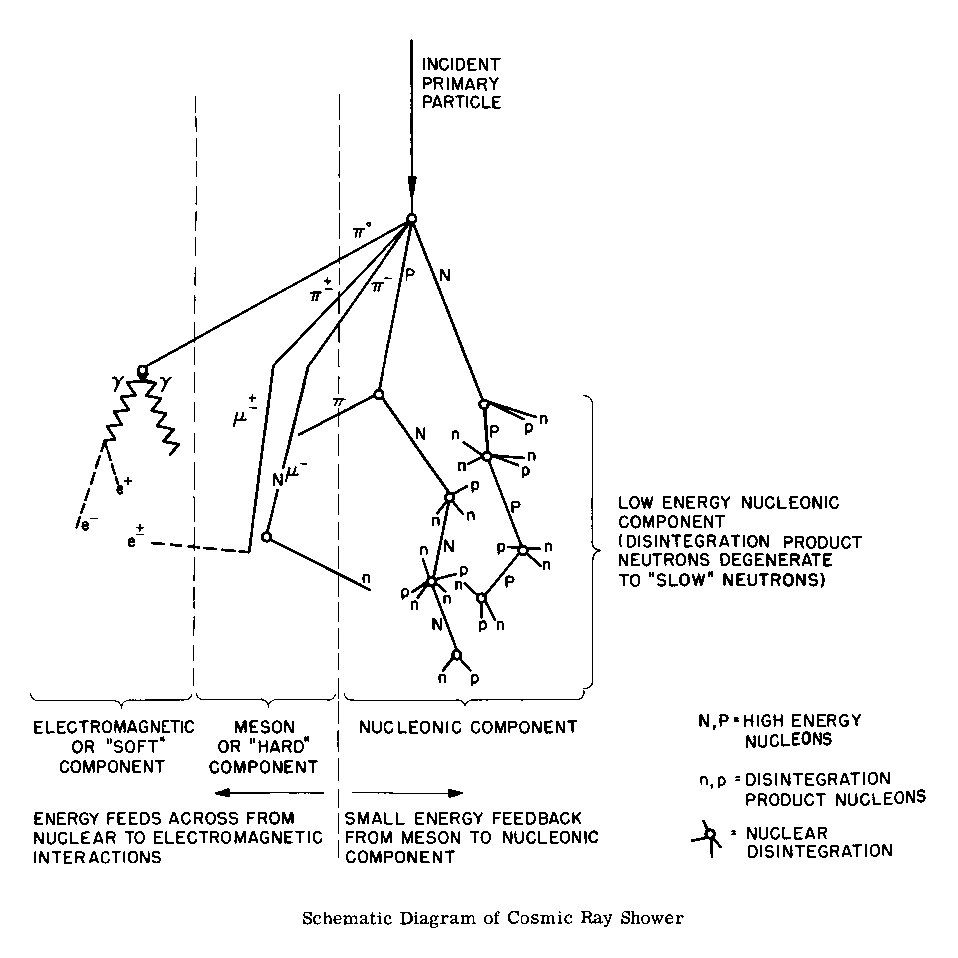Atmospheric Interactions
![]()
Next
Atmospheric Interactions |
||
|
Next |

|
||||||||||||||||||||||||||||||||||||||||||||||||||||||||||||
Atmospheric InteractionsAs a primary cosmic ray, wandering through interstellar space (density on the order of 10-23 g/cm3), suddenly encounters our atmosphere where the density rapidly rises 20 orders of magnitude to 10-3 g/cm3 at sea level, it very likely will collide with particles of air. These interactions result in the production of three kinds of pions (positive, negative, and neutral) and two kinds of Kaons (positive and negative). Pions and Kaons are mesons (particles made up of a quark-antiquark combination) and have extremely short life times. The charged pions with mean life times of 26 nanoseconds and the Kaons with lives of 12 nanoseconds, decay into muons which have lives 1000 times longer (2.2 microseconds). The neutral pions decay almost immediately (10-16 s) into gamma rays. The muons can decay into electrons (or positrons) but their lifetime is long enough that they usually make it all the way to the ground. The high-energy gamma rays start an electromagnetic cascade of electrons and positrons. Pair Production (electron/positron pair) occurs when gamma rays encounter air nuclei. Bremsstrahlung ("breaking radiation") occurs when the resultant electrons pass near air nuclei producing more gamma rays, which in turn produce more electrons. At sea level, for every 10,000 muons, there will still be roughly: 200 primaries (protons and occasional neutrons), 20 high-energy electrons (E>1GeV), and 4 pions. But there may be up to 100,000 low energy electrons created by the cascade. These particles are absorbed quickly, but if the shower is energetic enough or the shower started low enough, they may still be the most prevalent particles at sea level. However, because of their lack of penetrating power, the plastic scintillators we are using, won’t detect them anyway.
|
||||||||||||||||||||||||||||||||||||||||||||||||||||||||||||
 |
||||||||||||||||||||||||||||||||||||||||||||||||||||||||||||